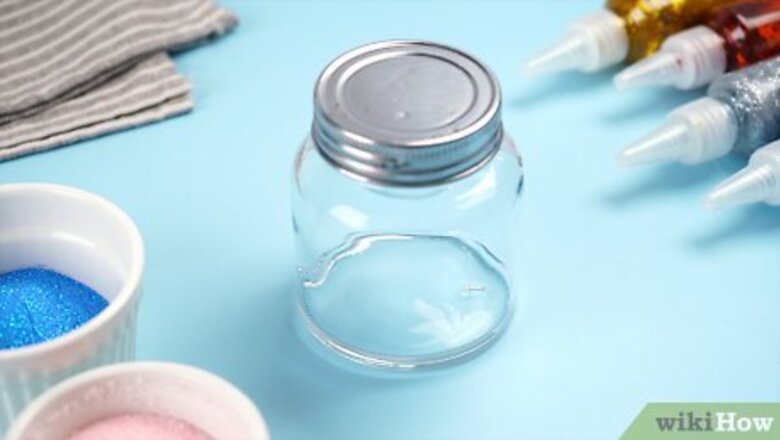
views
Getting Started
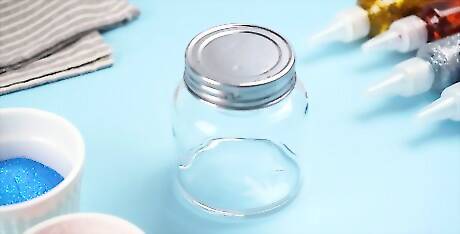
Choose your glass object. You can use this tutorial for just about anything made out of glass, including mason jars, cups, and wine glasses. Avoid choosing something that will be going outside or has a lot of sharp/faceted edges, however. Keep in mind that glittered glass tends to be delicate, so something that will be going outside or heavily used is not a good glittering candidate.
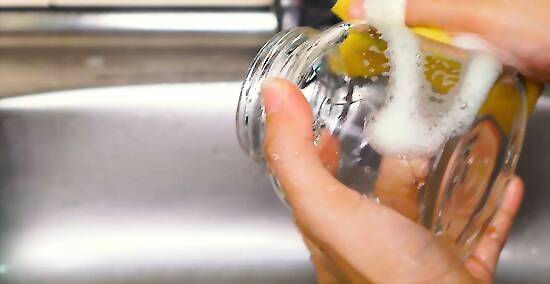
Clean the glass well with soap and water. Wash the glass using warm water and dish soap. Rinse it off well, then wipe it dry. This will get rid of any surface dust and dirt that might prevent the glue and glitter from sticking. It is a good idea, even for store-bought items that look clean.
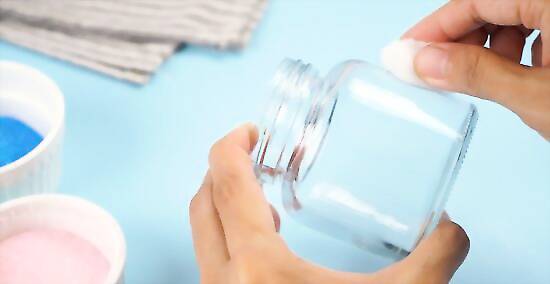
Wipe the surface down with rubbing alcohol. Soak a cotton ball with rubbing alcohol and wipe down the entire surface. This will get rid of any oil and residue that the regular washing did not get rid of. Any oils left on the glass will prevent the glue and glitter from sticking.
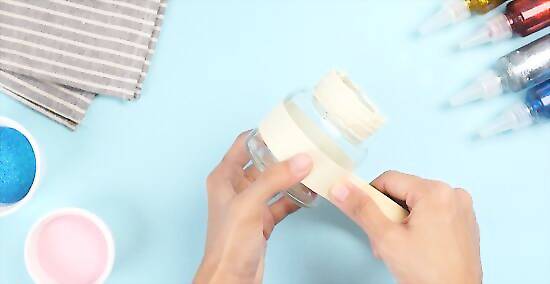
Mask off the area you want glittered. If you want the entire object glittered, then there is no need to do this. Keep in mind, however, that if you plan on glittering a cup or wine glass, you will need to leave the 3/4 inch (1.91 centimeters) un-glittered. Use adhesive glass stencils to create delicate designs. Use stickers if you want the entire object glittered, but a shape un-glittered. Use masking tape to create cold designs, such as stripes and zigzags.

Consider using etching cream on your design first. Glass is a very smooth surface, so it will be difficult to get glue to stick to it permanently. Etching cream will roughen up the surface, and make it easier for the glitter to stick. It is great for small designs, but may be uneven in larger ones. Different brands may have different instructions, but listed below are the basics: Put on a pair of vinyl or plastic gloves. Apply the cream using a popsicle stick. Wait 5 minutes. Rinse the cream off in a stainless steel sink. If you have a glaze or porcelain sink, use a bucket instead. Pat the design dry.
Applying Glue and Glitter

Pour some glue into a dish. The best type of glue for this would be a glue used for glass and ceramic projects. Decoupage, Mod Podge, and similar types of glue are also popular for these types of projects, but the finished piece will not be as durable. Avoid using tacky glue, school glue, or basic white glue. They are water soluble and will not last very long.
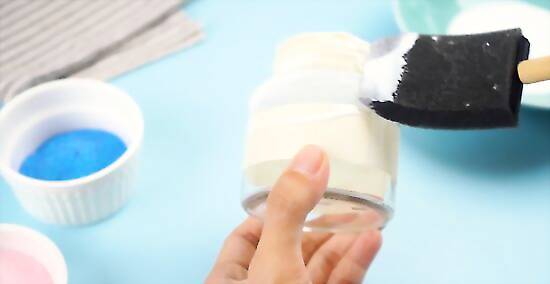
Use a foam pouncer or similar foam brush to dab the glue onto your design. Avoid using a paintbrush, if you can; paintbrushes are more likely to leave behind visible streaks and strokes. Wait for the glue to dry, then apply a second coat. The first coat "primes" the surface, while the second coat gets the glitter. If you are working on a large area, consider applying the glue to only a small patch first. This way, the glue won't dry by the time you get around to glittering it. If you want to use more than one color, choose one color to start with. Apply the second coat of glue to the areas with that color first. You'll add the other color(s) after the first one dries. If you want to create a fading or ombre effect, apply the glue over the entire area you want glittered. This will help the colors blend together.
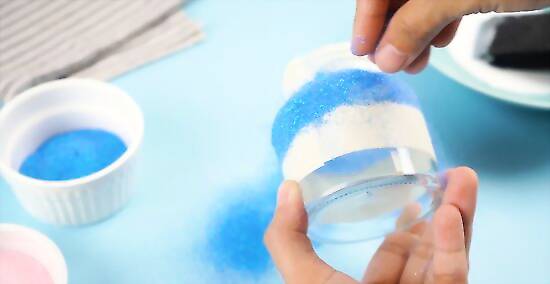
Shake some glitter onto the glue. You can use any type of glitter you want, but extra-fine glitter (found in the scrapbook section of an arts and crafts store) will give you a more professional looking result. Keep in mind that iridescent glitter tends to be somewhat translucent, while metallic glitter is completely opaque. If you are creating an ombre effect, apply your first color halfway up the design. If you are covering an entire object with glitter, hold the object on its side and slowly rotate it while you shake the glitter on.
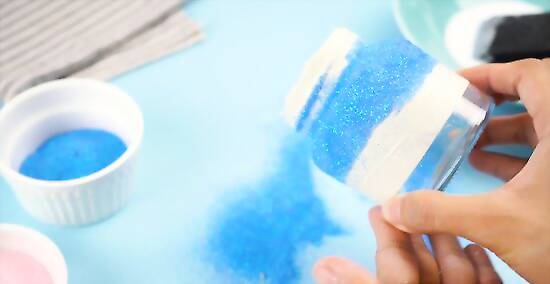
Tap the excess glitter off. Turn the project on its side, and gently tap or shake it to knock off any excess glitter. If you are creating an ombre effect, be careful not to get the glitter past where you want the first color to end.

Let the first color dry, unless you are doing an ombre effect. If you apply your second color too soon, some of the colors may mix and stick together. This can create a messy look. If you are doing an ombre effect, work quickly to add your second color before the glue dries.

Add on your second color. Apply some more glue, then shake on your second color. Keep doing this, color by color, until your design is complete. If you are creating an ombre effect, shake on your second color. Then, take your first color, and sprinkle it a little bit past where the second one begins. This will help "blend" the two colors together.

Peel off the tape or stencil once you are happy with your work. Gently lift the stencil or tape by the corner, and peel it away. If the glitter smears, you can carefully push it back into place with a toothpick, and wipe off any excess with a damp Q-tip.
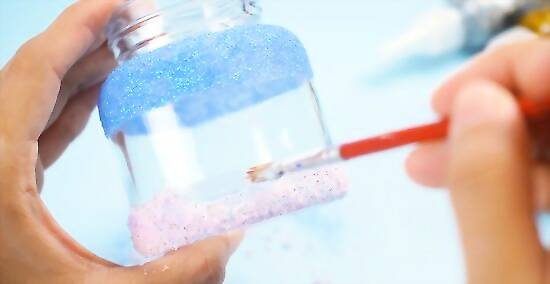
Re-touch any bare patches once the glue is dry to the touch. If you see any bare spots, take a thin paintbrush and carefully apply some more glue. Shake on some more glitter, then tape the excess off.
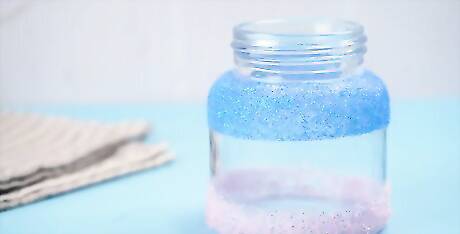
Let the glue dry. Depending on what brand and what type of glue you used, this can take anywhere between 20 minutes and 4 hours. Some glues also require a several days curing time. Read the label on your bottle of glue for more specific drying instructions.
Finishing and Sealing
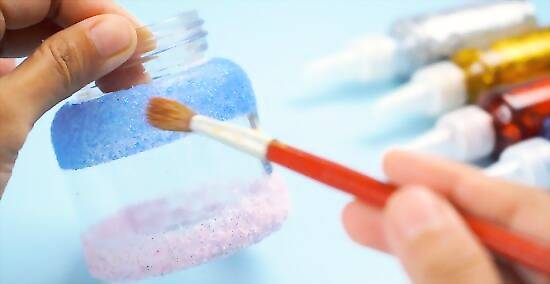
Lightly go over the glittered areas with a dry, fluffy paintbrush. This will brush off any excess glitter that the tapping did not get rid of earlier. It will help prevent the glitter from shedding when you go to seal it.
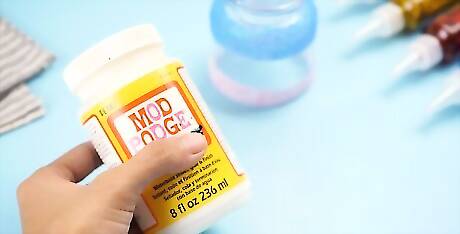
Paint on a coat of Mod Podge if you just want basic sealing. Always move your brush in the same direction: top to bottom or side to side. To lock in your design, extend the glue just past the edge of the design and onto the glass itself. You don't have to extend it by a lot, a millimeter or two will be enough. Make sure that you are using a sealer with a glossy finish. If you use a matte, semi-gloss, or satin finish, your glitter will lose its sparkle and look like sand instead. Unless your sealer says that it is waterproof or dishwasher safe, your project will not be washable. You can gently wipe the glittered area clean with a damp cloth, but you cannot wash it. If your sealer says "dishwasher safe," use caution. Do not leave your item soaking, or the glitter will peel off. It might be better to hand wash them instead.

Use an acrylic spray-on sealer if you want extra durability. Choose a clear, glossy-finish sealer; don't use a matte, semi-gloss, or satin finish, or your glitter will loose its sparkle. Apply a light coat of the sealer. If you glittered just one part of your project, such as a wine glass stem, wrap a plastic bag over the un-glittered part. Even though the sealer is clear, it may still change the "look" of glass. Some people find that spraying their projects with glitter helps make them more durable and hand washable. This is great if you have to cover large areas. If you glittered a wine glass base, consider spraying the bottom and edges as well, to "seal" the glitter in.
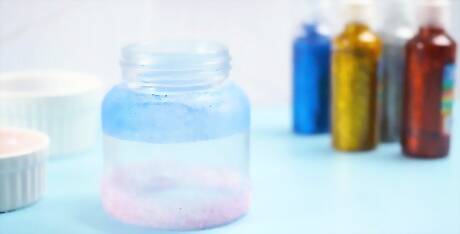
Let the sealer dry before applying a second coat. Reapply the second coat in the same way you did the first. If the sealer still looks too thin, you may apply a third coat; make sure that the second one is completely dry though.


















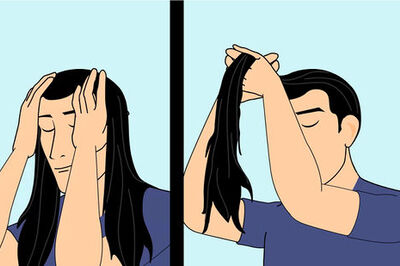

Comments
0 comment